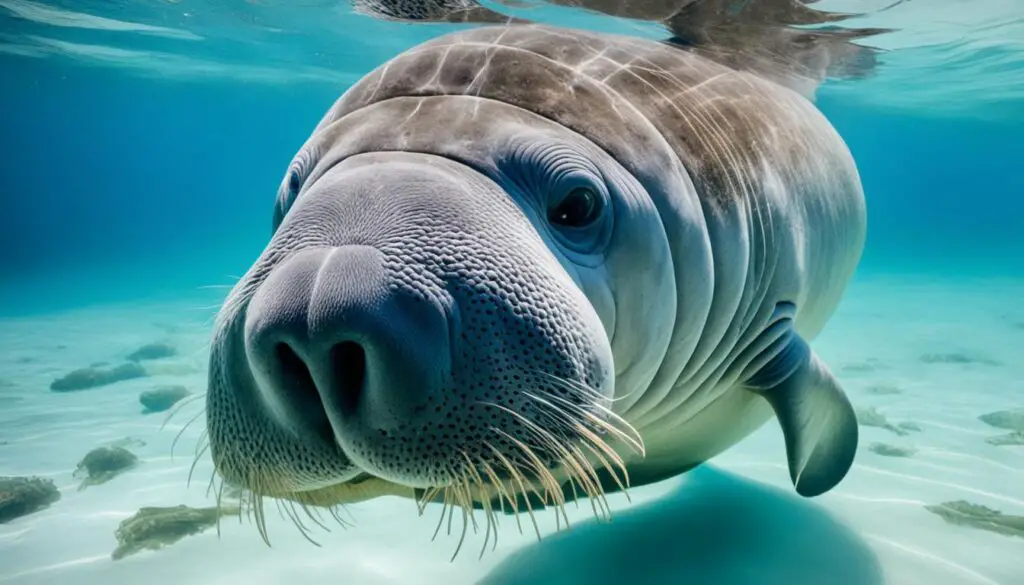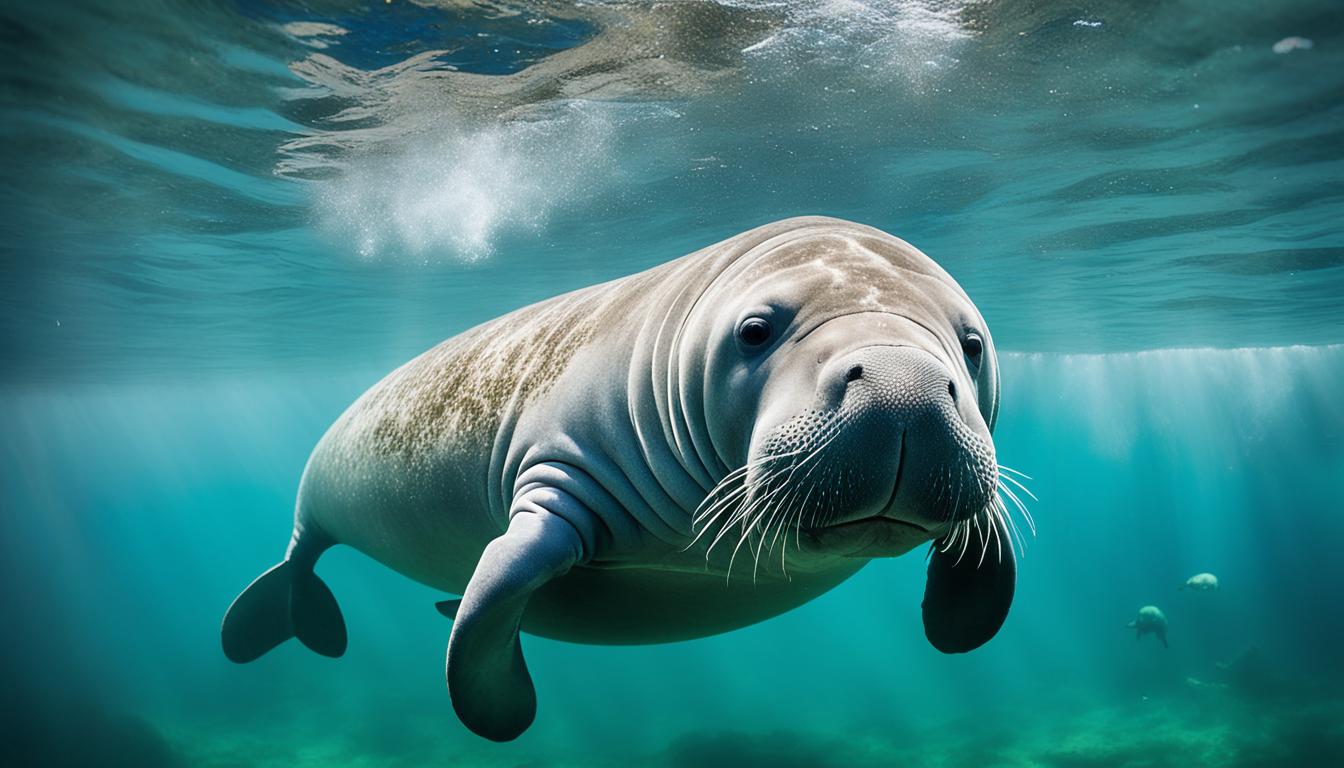Manatees live in Florida’s waters and the Caribbean. They have breathing habits that are quite interesting. Learning how they breathe can make us appreciate these gentle giants more. They have special ways to live underwater and come up for air.
Adult manatees can be up to 10 feet long and weigh over 1,200 pounds. This shows how important their manatee respiration system is for them.
Manatees are slow-moving and eat plants underwater. This affects their manatee breathing habits. Learning about their breathing is key to understanding their survival. It’s important for their conservation, facing threats like losing their home and boat accidents.
Let’s dive into the details of manatee respiration and its impact on their life in our waters.
Introduction to Manatee Breathing
Manatees are fascinating mammals with special ways of breathing underwater. They need lungs to breathe, just like humans do. Unlike fish, they must come up to the surface to take in air. This affects their behavior and where they live.
Manatees can hold their breath for up to 20 minutes, but they usually come up every few minutes. This helps them keep enough oxygen, especially in warm waters or shallow rivers. It’s where they are often found.
Seasons change how manatees breathe. In winter, they move to warmer waters for better breathing. This helps them stay healthy and breathe well.
To sum up, manatees breathe in a special way that lets them live in the water. Their breathing helps them manage oxygen well in their home.
Understanding Manatee Respiration
Manatee respiration is key to their health and long life. They have big lungs for efficient gas exchange. This special lung structure lets them take in a lot of air, meeting their oxygen needs.
When manatees come up for air, it looks simple, but it’s not. They can breathe in a lot of air fast, thanks to their flexible diaphragm. This is crucial during foraging, when they need to stay underwater a long time. Being able to fill their lungs with oxygen boosts their activity and metabolism.
The way manatees breathe shows how evolution has shaped their bodies. By looking at their lungs and how they breathe, we see the special traits that help them live in the water.
How do manatees breathe?
Manatees have special ways to breathe that help them live in the water. They need to breathe air to survive. When they come up to the surface, they use their blowhole at the top of their snout to breathe in fast. This is important because they need oxygen after being underwater for a long time.
The Breathing Process of Manatees
When manatees breathe, their strong diaphragm helps a lot. It contracts to let in a lot of air at once. This helps refill their blood with oxygen, which is key for their health and how active they can be. They can hold their breath for up to 20 minutes, showing how good their breathing is.
Manatee Lungs and Air Intake
Manatees’ lungs are made to take in a lot of oxygen. Their lungs work well to exchange gases. With each breath, they make sure to take in as much oxygen as they can. This lets them stay underwater for a long time, which is important for finding food and moving around.

| Feature | Description |
|---|---|
| Blowhole Location | Located on top of the snout for quick access to air |
| Breathing Technique | Rapid inhalation to replenish oxygen levels |
| Lung Specialization | Adapted for maximum oxygen absorption |
| Diaphragm Strength | Strong muscles allow precise control of air intake |
| Breath-Holding Capacity | Can hold breath for up to 20 minutes while diving |
The Manatee Respiratory System
The manatee’s respiratory system is a key feature that helps them live in the water. Their lungs are made for taking in oxygen efficiently, which is vital for them. When you see manatees at the surface, they breathe in fresh air and breathe out carbon dioxide. This keeps their oxygen levels up and helps control their breathing.
Manatees breathe deeply to get enough oxygen for their bodies. This lets them stay underwater for a long time, using their stored oxygen. Their lungs also help them control their buoyancy and keep a stable body temperature in different water conditions.
Learning about the manatee’s respiratory system sheds light on their daily life. As you explore more about these amazing animals, you’ll see how their breathing skills are key to their survival. They use these skills to move through the water and keep a balance in their environment.










